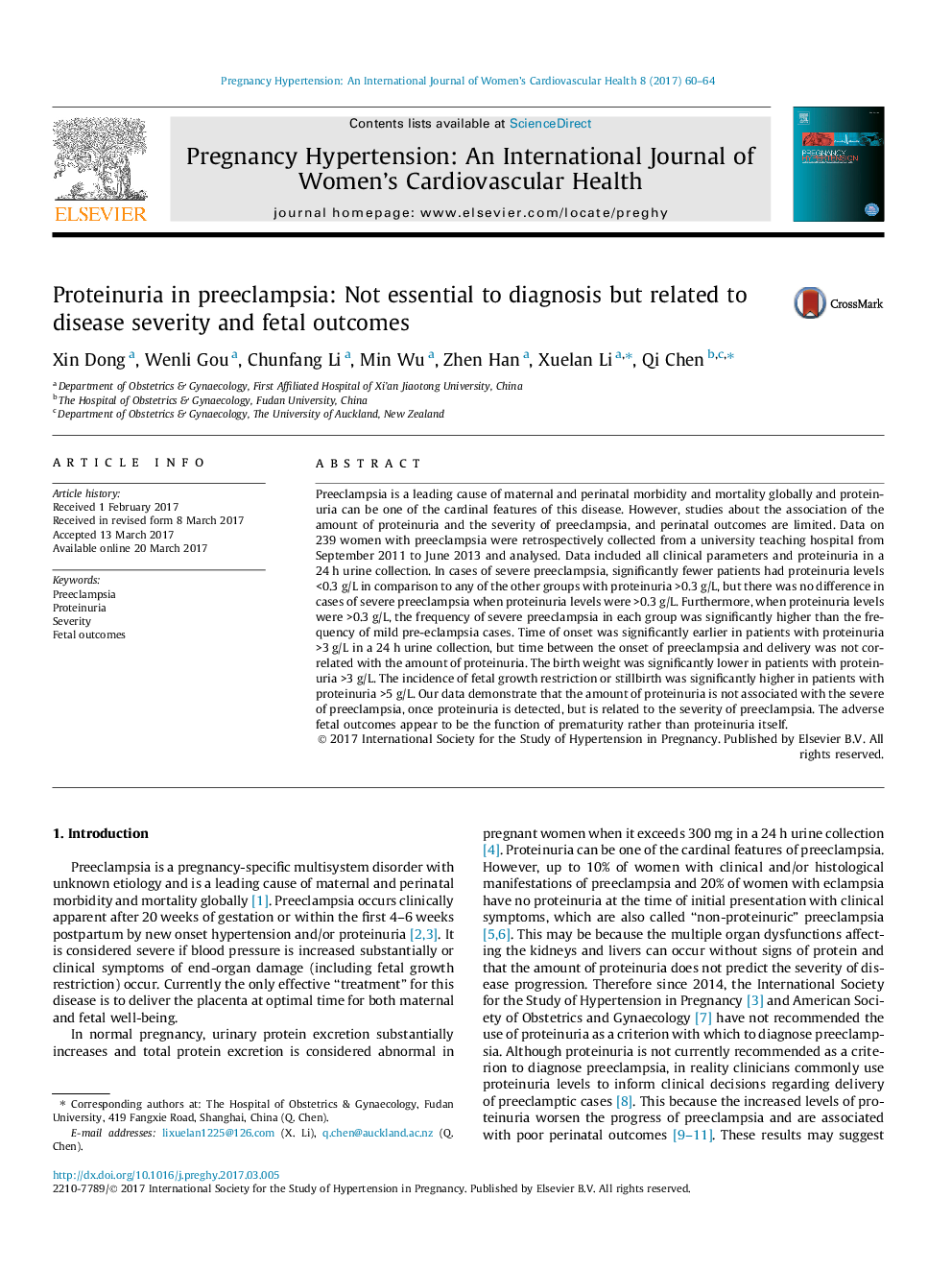| Article ID | Journal | Published Year | Pages | File Type |
|---|---|---|---|---|
| 5619426 | Pregnancy Hypertension: An International Journal of Women's Cardiovascular Health | 2017 | 5 Pages |
Abstract
Preeclampsia is a leading cause of maternal and perinatal morbidity and mortality globally and proteinuria can be one of the cardinal features of this disease. However, studies about the association of the amount of proteinuria and the severity of preeclampsia, and perinatal outcomes are limited. Data on 239 women with preeclampsia were retrospectively collected from a university teaching hospital from September 2011 to June 2013 and analysed. Data included all clinical parameters and proteinuria in a 24Â h urine collection. In cases of severe preeclampsia, significantly fewer patients had proteinuria levels <0.3Â g/L in comparison to any of the other groups with proteinuria >0.3Â g/L, but there was no difference in cases of severe preeclampsia when proteinuria levels were >0.3Â g/L. Furthermore, when proteinuria levels were >0.3Â g/L, the frequency of severe preeclampsia in each group was significantly higher than the frequency of mild pre-eclampsia cases. Time of onset was significantly earlier in patients with proteinuria >3Â g/L in a 24Â h urine collection, but time between the onset of preeclampsia and delivery was not correlated with the amount of proteinuria. The birth weight was significantly lower in patients with proteinuria >3Â g/L. The incidence of fetal growth restriction or stillbirth was significantly higher in patients with proteinuria >5Â g/L. Our data demonstrate that the amount of proteinuria is not associated with the severe of preeclampsia, once proteinuria is detected, but is related to the severity of preeclampsia. The adverse fetal outcomes appear to be the function of prematurity rather than proteinuria itself.
Related Topics
Health Sciences
Medicine and Dentistry
Cardiology and Cardiovascular Medicine
Authors
Xin Dong, Wenli Gou, Chunfang Li, Min Wu, Zhen Han, Xuelan Li, Qi Chen,
